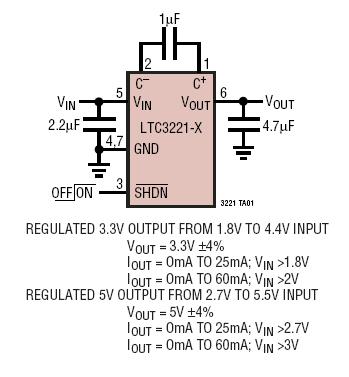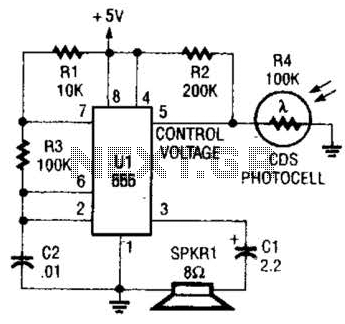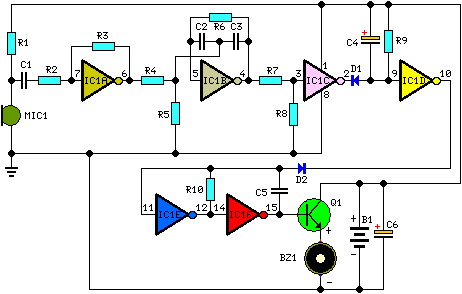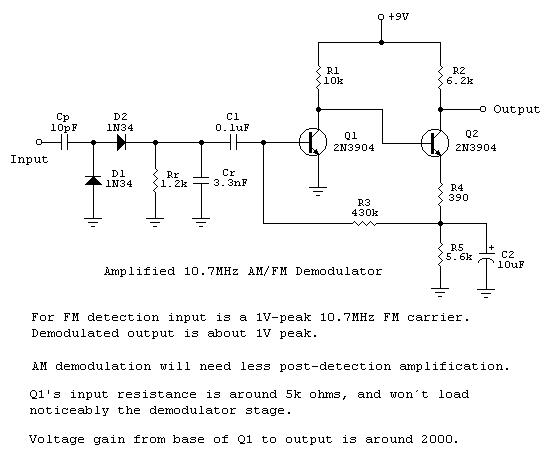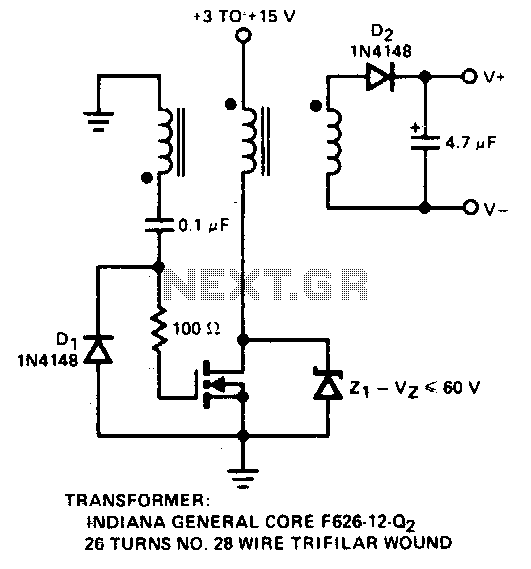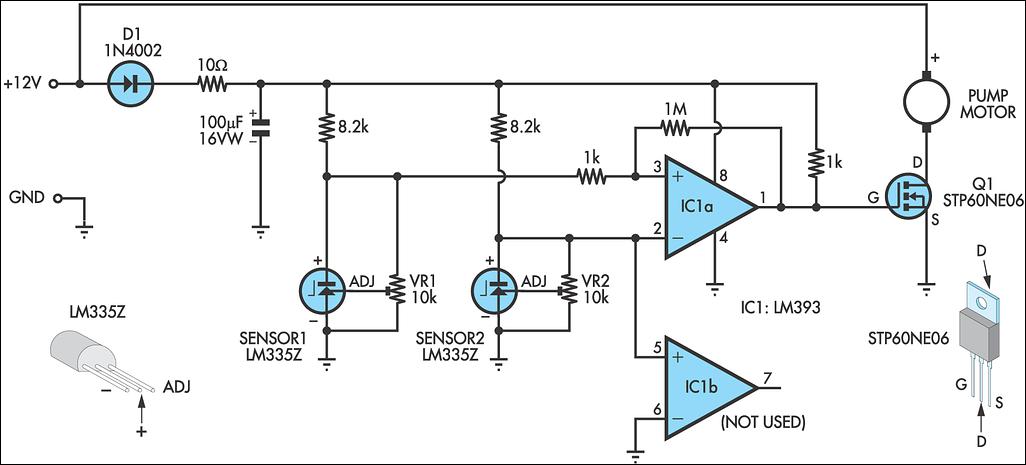
Light-Controlled Pond Pump
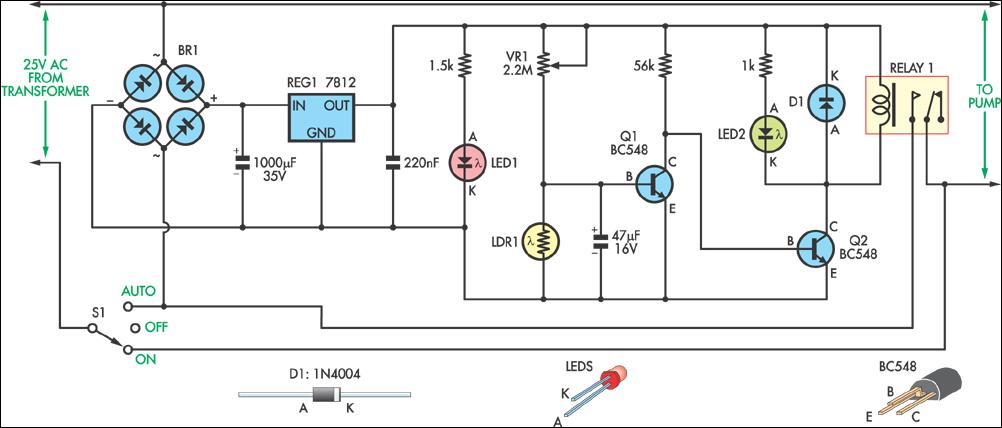
This circuit was designed to control a pump in a garden pond, enabling it to automatically activate at dawn and deactivate at dusk.
The circuit utilizes a light-dependent resistor (LDR) to detect ambient light levels, which serves as the primary sensor for determining day and night conditions. The LDR is connected in a voltage divider configuration with a fixed resistor, creating a varying voltage output that changes based on the light intensity. This output is fed into a comparator circuit, which may consist of an operational amplifier configured to switch states when the voltage crosses a predetermined threshold.
The output of the comparator is connected to a relay or a transistor switch, which controls the power supply to the pump. When the light level drops below the threshold at dusk, the comparator output changes state, activating the relay and thus powering the pump. Conversely, as dawn approaches and light levels increase, the LDR's resistance decreases, causing the comparator to deactivate the relay and turn off the pump.
Additional components may include a potentiometer for adjusting the threshold sensitivity, allowing for customization based on the specific environmental conditions of the garden pond. A diode may also be included in parallel with the relay coil to prevent back EMF from damaging the circuit when the relay is switched off. This design ensures that the pump operates efficiently, conserving energy and maintaining optimal water levels in the pond without manual intervention.This circuit was constructed to control the pump in a garden pond, so that it automatically turns on at dawn and off again at dusk. Not only does this mea.. 🔗 External reference
The circuit utilizes a light-dependent resistor (LDR) to detect ambient light levels, which serves as the primary sensor for determining day and night conditions. The LDR is connected in a voltage divider configuration with a fixed resistor, creating a varying voltage output that changes based on the light intensity. This output is fed into a comparator circuit, which may consist of an operational amplifier configured to switch states when the voltage crosses a predetermined threshold.
The output of the comparator is connected to a relay or a transistor switch, which controls the power supply to the pump. When the light level drops below the threshold at dusk, the comparator output changes state, activating the relay and thus powering the pump. Conversely, as dawn approaches and light levels increase, the LDR's resistance decreases, causing the comparator to deactivate the relay and turn off the pump.
Additional components may include a potentiometer for adjusting the threshold sensitivity, allowing for customization based on the specific environmental conditions of the garden pond. A diode may also be included in parallel with the relay coil to prevent back EMF from damaging the circuit when the relay is switched off. This design ensures that the pump operates efficiently, conserving energy and maintaining optimal water levels in the pond without manual intervention.This circuit was constructed to control the pump in a garden pond, so that it automatically turns on at dawn and off again at dusk. Not only does this mea.. 🔗 External reference
